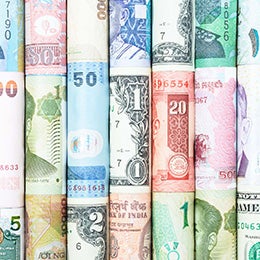We live in an increasingly uncertain world. And central banks have noticed. Diversifying its reserve may be a central bank’s best defence against economic and geopolitical volatility. In preparing for more unpredictability, institutions have expanded reserves, upgraded risk frameworks and liquidity structures, and added flexibility. The trend seems likely to continue, according to Invesco’s 2025 Global Sovereign Asset Management Study.
Reserve accumulation had started to stabilize a few years ago, but that’s now changing. Invesco’s study found that 64% of central banks intend to increase their reserve levels, while 53% plan to further diversify their holdings. Over the past three years, almost three-quarters of central banks have enhanced their risk management processes and close to two-thirds have reassessed reserve adequacy standards. “The challenging past three years pushed us to reevaluate our reserve levels,” according to one Middle Eastern central bank. “We realised how crucial it is to maintain strong buffers to protect against external shocks.”
Multiple factors figure into the reserve equation, the dollar’s long-term stability perhaps foremost among them. While alternatives exist, none appear capable of taking over the reserve currency role. Gold, a historical safe haven, is on the rise, however. Let’s explore these issues in order.
Rising concerns about the dollar
Concerns about the long-term stability of the US dollar are intensifying among central banks. Rising US debt levels, persistent fiscal deficits, and political volatility have sharpened questions around the dollar’s future role in the global system.
This year’s study shows that 72% of central banks believe US fiscal dynamics are negatively impacting the dollar’s long-term outlook, a notable increase from last year’s 64%. Central banks regularly flagged worries that persistent fiscal deficits, combined with political gridlock, could eventually undermine confidence in the dollar’s value and erode its safe-haven status.
